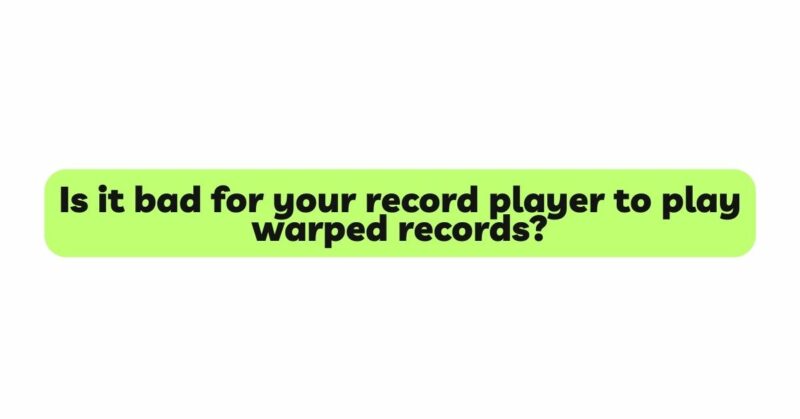Vinyl records have experienced a resurgence in popularity over recent years, appealing to audiophiles and music enthusiasts seeking a nostalgic listening experience. While vinyl’s warm sound and tangible nature attract many, they are also susceptible to warping, a common issue that can potentially harm both the records and the turntable. In this article, we will delve into the world of warped records, exploring the factors causing them, how they affect your turntable, and the best practices to minimize any potential harm.
I. Understanding Warped Records:
Vinyl records are made of polyvinyl chloride (PVC), which is sensitive to changes in temperature and humidity. Warping occurs when the record becomes distorted due to exposure to extreme temperatures, sunlight, or improper storage. Records are often flat when purchased, but environmental conditions can lead to bowing, cupping, or edge warping.
II. The Impact of Warped Records on Your Turntable:
A common concern among vinyl enthusiasts is whether playing warped records can damage their turntables. Let’s explore the potential effects:
- Needle Damage: A warped record can cause the needle (stylus) to track unevenly, putting additional stress on one side of the groove. This uneven wear may lead to premature deterioration of the needle and may reduce sound quality.
- Tracking Errors: As the stylus encounters the warped surface, it may struggle to maintain proper contact with the groove, resulting in tracking errors. Tracking errors can introduce distortion, skipping, and other playback issues.
- Turntable Motor Strain: When playing a warped record, the turntable’s motor must work harder to keep the platter rotating smoothly. Continuous strain on the motor may lead to premature wear and reduced overall performance.
- Tonearm Misalignment: In extreme cases, playing severely warped records can cause the tonearm to misalign, affecting the tracking force and azimuth. This misalignment can further exacerbate needle and record damage.
III. Identifying Warped Records:
Before playing any vinyl record, it’s essential to inspect it for warping. Some common signs of warping include visible bends, uneven surfaces, and difficulties lying flat on the turntable. If you suspect a record is warped, it’s best not to play it until it has been adequately inspected and potentially restored.
IV. Safeguarding Your Turntable and Records:
To protect your turntable and your cherished vinyl collection, consider adopting the following precautions:
- Proper Storage: Store your records in a cool, dry place away from direct sunlight and heat sources. Storing records vertically and using protective inner sleeves can prevent warping and dust accumulation.
- Gentle Handling: Handle your records with care, avoiding excessive pressure or bending while removing them from their sleeves.
- Pre-Play Inspection: Inspect each record before playing, looking for signs of warping or visible damage. If in doubt, consult a professional vinyl restoration service.
- Upgrading Your Turntable: Investing in a high-quality turntable with adjustable tracking force and tonearm alignment can mitigate potential issues caused by warped records.
- Regular Maintenance: Keep your turntable clean and well-maintained, including regularly cleaning the stylus and ensuring correct tracking force settings.
V. Restoring Warped Records:
If you come across a beloved record that is warped, it is possible to attempt restoration. However, this process requires expertise, and DIY methods may risk further damage. Seeking the assistance of professional vinyl restoration services is advisable for best results.
Conclusion:
In conclusion, while warped records can pose potential risks to your turntable and vinyl collection, adopting proper storage, handling, and maintenance practices can mitigate these concerns. Regular inspection of records and investing in a high-quality turntable are crucial steps to preserving both your records and your audio equipment. Remember, the enjoyment of vinyl records lies in the careful balance of maintaining the past’s nostalgia while embracing modern technology and best practices for optimal sound quality and longevity.


